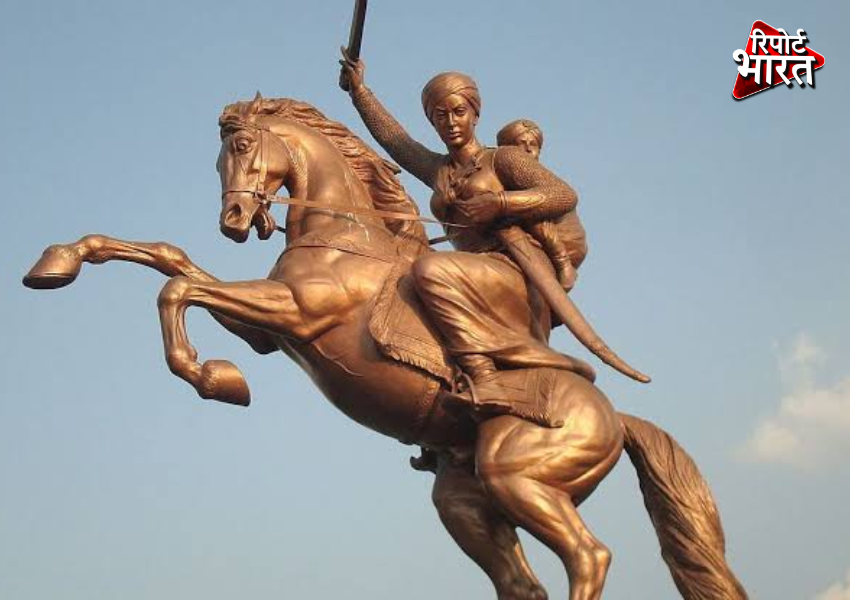Rani Lakshmibai Death Anniversary: “We heard the story from the mouth of Bundela Harbolas, Khoob Ladi Mardani Woh To Jhansi Wali Rani Thi…” Our childhood was spent reading these poems and listening to the stories of brave women. Rani Lakshmibai was such a brave woman who preferred death over British rule. On the morning of June 18, 1958, at the young age of 29, she was martyred fighting against the British. Today marks her martyrdom day. Let us explore the story of her life.
Rani Lakshmibai Death Anniversary: Manikarnika, Everyone’s Beloved Manu
Rani Lakshmibai was born on November 9, 1828, into a Marathi family in Banaras. Her childhood name was Manikarnika, but she was affectionately called Manu by everyone. From a young age, Manu was skilled in weaponry. She was no ordinary woman; her beauty and courage were both exemplary. We grew up listening to her tales of valor, and even today, we are inspired by them.
Becoming Rani Lakshmibai
In 1842, Manikarnika married Maharaja Gangadhar Rao Nevlekar of Jhansi and was given the name Rani Lakshmibai. Today, she is known by this name not only in India but around the world. Bravery was inherent in every part of Rani Lakshmibai.
Taking Charge of the Empire
Shortly after their marriage, the queen gave birth to a son, but he died after just four months. Fate took another turn when the Maharaja also died 11 years after their marriage. After losing her husband and son, Rani resolved to protect her empire, Jhansi, and its people at all costs. She took charge of Jhansi herself.
The British Eye on Jhansi
After the Maharaja’s death, the British saw an opportunity to capture Jhansi. Dalhousie, the Viceroy of the British India Company, believed this was the right time as Jhansi had no one to protect it. He initiated negotiations with Rani Lakshmibai.
Adopted Son Not Accepted as Successor
The British government started pressuring Rani Lakshmibai. Understanding their intentions, she adopted Maharaja Gangadhar’s cousin, Damodar, as her son. However, the British refused to recognize him as the heir to Jhansi. They offered the queen an annual pension of Rs 60,000 and demanded she hand over the fort of Jhansi.
Strategizing Against the British
Realizing that the British would try to capture Jhansi by force, Rani Lakshmibai devised a strategy to rebel against them. She prepared an army of 14,000 rebels with the help of Dost Khan, Ghulam Gaus Khan, Khuda Baksh, Kashi Bai, Lala Bhai Bakshi, Moti Bai, Diwan Raghunath Singh, and Diwan Jawahar Singh. Kashi Bai, in particular, was like a shadow to Rani Lakshmibai.
Refusing British Rule
Rani Lakshmibai never wanted to fight the British, but she had resolved never to accept their rule. She refused to meet the British unarmed, mistrusting them completely.
Entering Battle with Her Son
On March 23, 1858, the British army attacked Jhansi. After heavy bombardment, they broke the fort wall on March 30 and entered Jhansi. On June 17, 1858, Rani Lakshmibai entered the battlefield with her adopted son tied to her back. Neither she nor anyone else realized this would be her last battle.
Mystery Surrounding Her Death
There are many theories about Rani Lakshmibai’s death, causing much confusion. However, most people agree with Lord Canning’s report. According to this report, a soldier shot Rani from behind. She turned her horse and shot at the soldier, but he escaped and killed Rani Lakshmibai with his sword.
Also Read:How Many Times Men In Blue Had An Early Exit From T20 World Cup?





